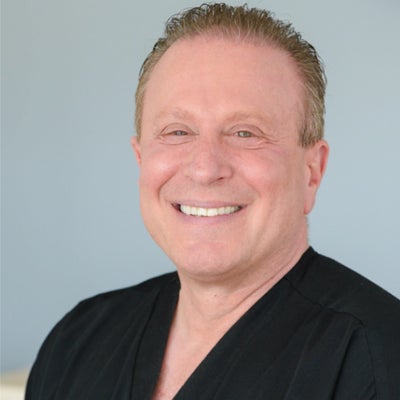NeoGen Plasma Skin Regeneration (PSR) is an FDA-cleared, nonsurgical skin rejuvenation treatment that uses nitrogen plasma technology for skin tightening, regeneration, and resurfacing. The treatment can boost elasticity and firm, tone, and smooth skin on the face, neck, and body.
NeoGen PSR works by converting inert nitrogen gas into plasma energy. Thermal energy pulses are emitted via a handpiece, rapidly heating up the lower layer of the skin (the dermis). The heat creates controlled damage that triggers your body's natural healing response, creating new collagen and elastin that delivers some immediate skin tightening, with increasingly firmer skin over the coming months.
Even at high energies, a NeoGen Plasma treatment doesn’t fully remove the skin's surface (epidermis), like the ablative laser treatments often used for skin resurfacing: it maintains a protective layer that encourages more rapid healing and prevents the risk of infection. This acts as an insulator and a natural biological dressing post-treatment.
Within 3–5 days of a high-energy treatment, skin regeneration begins and the damaged epidermis sheds as the new upper layer of skin appears to replace the treated epidermis. Improvement in skin tone, texture, and firmness continues for as long as a year after treatment. At lower energy levels, the stratum corneum (the outer layer of your skin) shed in about 1 to 2 days.
Unlike laser resurfacing, NeoGen Plasma isn’t dependent on a chromophore, or color target, such as excess brown pigment: it treats the entire skin architecture—and a host of cosmetic concerns—at once, in a single treatment. All 4 types of collagen are treated, not like Fractional Laser where just one type is produced. You also won’t need ocular guards or any sort of eye protection.
Dr. Paul Flashner, a physician with aesthetic practices throughout the Boston area, says that NeoGen is rapidly becoming the most recommended and requested treatment at his clinics, thanks to its versatility and efficacy. “The ability to address all the layers and architecture of the skin, improving the appearance of fine lines and wrinkles, skin texture and tone in 1 to 3 treatments is truly an aesthetic game-changer,” notes Dr. Flashner.
Your provider will customize your treatment’s settings for your skin tone, concerns, goals, and downtime consideration, from painless low-energy, minimal-downtime treatments to high-energy treatments that come with more downtime and more significant results.
Common concerns treated by NeoGen PSR include:
- Fine lines and wrinkles
- Skin laxity
- Excess pigmentation, age spots, and other signs of sun damage
- Scarring, including acne scars
- Active acne
- Loose skin on the upper and lower eyelids
- Seborrheic and actinic keratosis (benign skin lesions)
Pros
- The treatment can simultaneously address fine lines and wrinkles, skin laxity, uneven texture, and hyperpigmentation on the face, neck, chest, and hands.
- Your provider can customize the level of energy to your skin concerns and desired results.
- Low-energy treatments can be used safely on all skin types and tones.
- While it’s not a substitute for a surgical eyelid lift (blepharoplasty), NeoGen can be used to perform a “soft” eyelid lift, without the need for eye protection. According to the manufacturer, clinical studies show an average contraction of the eyelid skin of 22%.
- The treatment preserves the outer layer of skin, which acts as a natural protective dressing as new skin forms. Studies show that it comes with less downtime as well as fewer safety risks and potential complications than fully ablative laser resurfacing (which removes the skin’s top layer), while delivering comparable results.
- Results can last for a year or longer, depending on your treatment’s energy level and how well you take care of your skin afterward.
- There is no volume or fat loss associated with NeoGen Plasma.
- Results continue to improve for 12 to 24 months.
Cons
- You may need a series of treatments, to achieve your desired results.
- The high-energy treatment is best suited to those with fair to medium skin tones (Fitzpatrick skin types I–III).
- Patients with heat-sensitive melasma may not be good candidates.
- Even with topical anesthetic, the high-energy treatment can sting like the snap of a rubber band. Most patients find it tolerable, but on the first day after treatment, the sensation can feel like a sunburn.
- You may need up to 10 days downtime after a high-energy treatment, including significant peeling for several days.
- As with other skin rejuvenation procedures, results aren’t permanent; you’ll need annual follow-up treatments to maintain them.
- Average Cost:
- $1,965
- Range:
- $750 - $3,300
The price you pay will depend on your provider’s credentials and reputation, their practice location, and how many treatment sessions you have.
A full-face treatment takes around an hour, while treating a small area, like around the eyes, takes 10–15 minutes.
- Your provider will start by applying numbing cream to the treatment areas. Even once you're numb, the treatment can be uncomfortable at high-energy settings. If you’re concerned about pain, you may want to request nitrous oxide or an oral sedative.
- As your provider methodically moves the handpiece over your skin, it will release pulses of heat from the plasma energy.
- They will adjust the energy level and the number of passes to your concerns and skin type.
You'll need 1–10 days of downtime, depending on the energy level of your treatment.
Low-energy treatments have minimal side effects and downtime, while the effects of a high-energy treatment are similar to those of a bad sunburn: immediately post-treatment, your skin will look inflamed and mildly swollen. Then it will darken over the next few days as damaged skin becomes crusty and begins to peel. Your skin may also itch and feel dry and tight.
Post-op skin care instructions typically include avoiding moisturizer and products (save for petroleum jelly ointments), to encourage the dry skin to naturally slough off.
Once the peeling process is complete, you can resume your skin-care routine, starting with a gentle moisturizer.
You may see some skin tightening immediately, with improved firmness and a more youthful appearance for up to a year after treatment, as collagen and elastin regeneration continues.
Additional treatments can amplify the effects. When the device is used on less aggressive settings, doctors recommend a series of three treatments, spaced four to six weeks apart.
Skin resurfacing results appear within 10 days, once you're done peeling. The new skin that emerges after the damaged skin peels off will look smoother, more evenly toned, and more youthful.
Your new skin will be sun-sensitive, so it’s important to avoid direct sun exposure for several months following treatment and faithfully wear SPF 30+ sunscreen, to prolong your results.


